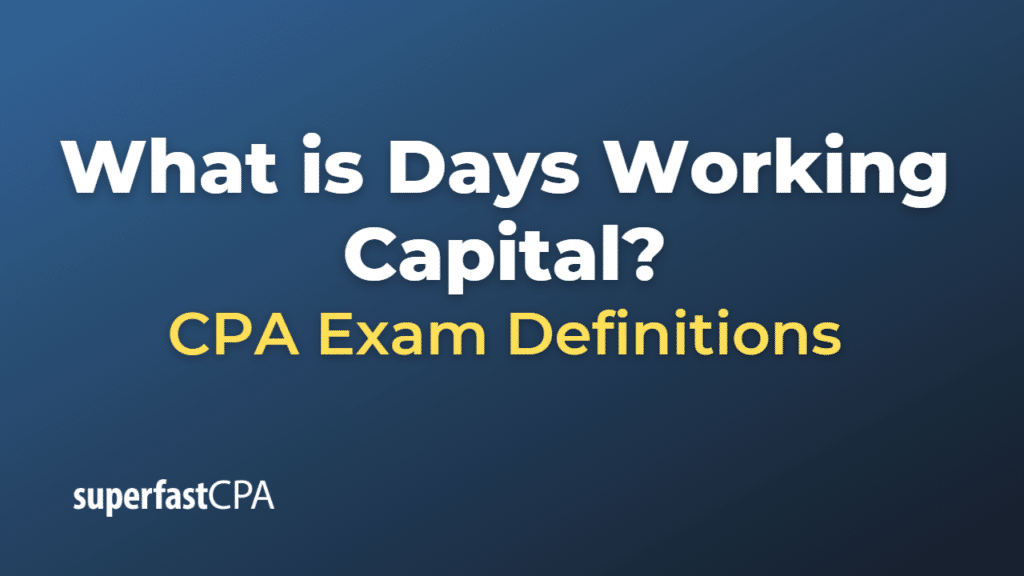Days Working Capital
Days Working Capital (DWC), also known as the Working Capital Cycle or the Cash Conversion Cycle, measures how long it takes for a company to convert its working capital into revenue. It is a key indicator of a company’s operational efficiency and short-term financial health.
The formula for Days Working Capital is as follows:
Days Working Capital = Days Sales Outstanding (DSO) + Days Inventory Outstanding (DIO) – Days Payable Outstanding (DPO)
Where:
- Days Sales Outstanding (DSO) measures the average number of days it takes a company to collect payment after a sale has been made.
- Days Inventory Outstanding (DIO) measures the average number of days a company holds its inventory before selling it.
- Days Payable Outstanding (DPO) measures the average number of days it takes a company to pay its bills and invoices.
The result, expressed in days, represents the time it takes for a company to convert its investment in inventory and other resources into cash flow from sales, after paying its suppliers.
A shorter Days Working Capital cycle is generally preferred, as it indicates that a company is able to quickly turn its working capital into revenue. This could mean that the company is managing its inventories well, collecting its receivables quickly, and/or taking longer to pay its payables, all of which can contribute to better cash flow.
On the other hand, a longer Days Working Capital cycle might suggest that a company’s capital is tied up in its working capital for too long, which could indicate inefficiencies in inventory management, receivables collection, or payables management. This could potentially strain the company’s cash flow and affect its ability to cover short-term obligations.
As with most financial metrics, Days Working Capital should be considered in the context of the company’s industry and compared with its competitors and with its own historical performance.
Example of Days Working Capital
Let’s consider a hypothetical company to illustrate this.
Suppose that for the current fiscal year, the company reported:
- Days Sales Outstanding (DSO): 40 days
- Days Inventory Outstanding (DIO): 50 days
- Days Payable Outstanding (DPO): 30 days
We can calculate the Days Working Capital (DWC) as follows:
DWC = DSO + DIO – DPO
DWC = 40 days + 50 days – 30 days = 60 days
This means that, on average, it takes the company 60 days to convert its working capital into revenue.
To interpret this figure, the company would need to compare it with its own DWC from previous years, as well as with the DWCs of other companies in the same industry.
For instance, if the industry average DWC is 45 days, this company is taking longer than its competitors to convert its working capital into revenue, which could suggest inefficiencies in its operations. On the other hand, if the company’s DWC was 70 days in the previous year, the current DWC of 60 days could indicate an improvement in its operational efficiency.













